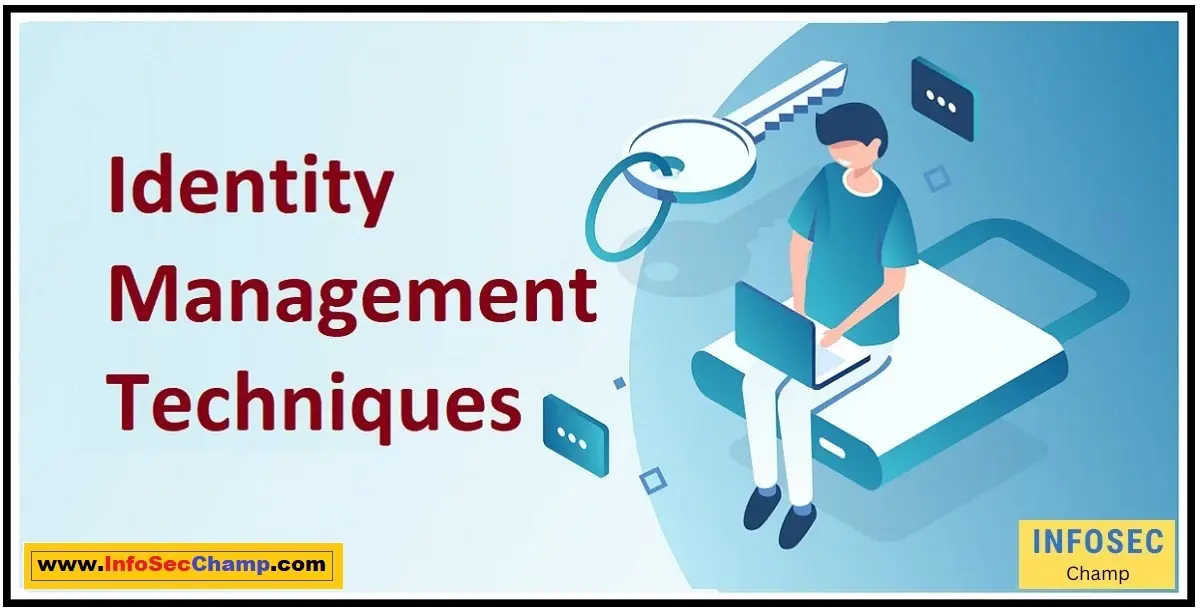Are you safe online? Find Out How Identity Management Can Protect You!
Due to the frequency of identity theft and fraud in the modern digital age, your personal and financial information is at risk. Identity management, however, can help you protect your online identity and critical data. By safeguarding your login details and identifying phishing emails, identity management solutions can stop unauthorized access to your personal information.
By safeguarding your login details and identifying phishing emails, identity management solutions can stop unauthorized access to your personal information.
People want to be safe online in this age of information overload, so they are looking for solutions to secure their identities. By using a strong, viral SEO-optimized hook, you may draw the attention of millions of consumers looking for a means to protect their personal information. By using words like “Find Out How” and “Protect You,” you could pique people’s curiosity in knowing more about identity management. Identity management is the best option for everyone who wants to safeguard their identity, regardless of whether they are individual or business owners.
What is identity management?
Identity management is the process of managing users’ digital identities, which includes managing their access to various digital resources such as systems, programs, and data. The main objective of identity management is to ensure that users can only access information that they are authorized to access.
- Authentication: Verifying a user’s identity through authentication entails entering login information, such as usernames and passwords, in order to create a secure connection.
- Authorization: Authorization guarantees that users can only access the resources that they are permitted to access by granting or refusing access to specific resources depending on the user’s role, permissions, and policies.
- User management: User administration is the process of adding, removing, and changing user accounts. It is crucial to managing user accounts and associated rights to guarantee that only authorized workers are granted access.
Several crucial elements of identity management include:
- Single sign-on (SSO): Single sign-on (SSO) is a feature that lets users log into various applications with just one set of login information.
- Role-based access control (RBAC): RBAC assigns permissions based on user roles, such as managers, employees, and contractors.
- Directory services: Directory services store and manage user information, making it simpler for users to access resources and applications.
- Federated identity management: Federated identity management enables users to access remote resources using local accounts.
How does identity management work?
“Identity management (IDM) is the process of identifying, authenticating, and granting access control to digital resources for persons inside an organization. It focuses on controlling user identities and their access to services and resources. IDM operates as follows:
- User authentication: IDM confirms a user’s identification by confirming their credentials, such as a username and password, biometric authentication, or smart cards.
- Authorization: Upon authentication, IDM determines a user’s access to certain resources and services based on their roles and permissions.
- Centralized management: IDM often uses a centralized management system to control user identities, roles, and permissions.
- Secure access: IDM manages authentication elements such as certificate-based authentication and single sign-on to offer secure access to applications and data.
- Audit and compliance: IDM assists enterprises in adhering to legal obligations and audits user behavior to stop unauthorized access.
- Identity federation: IDM can federate identities between businesses to allow for secure communication without requiring users to manage numerous passwords.
Identity management has many advantages, including:
- Enhanced compliance and security
- Easier user access and authentication
- Improved user experience
- Lower IT management expenses
- Improved identity and access management flexibility and scalability
To sum up, identity management is a crucial component of digital security that enables businesses to restrict user access to resources and boost overall security. It provides secure and streamlined access to digital resources by identifying, authenticating, and authorizing users.
Companies that utilize IDM can gain from improved security and compliance, streamlined authentication, and overall cost savings. Organizations must constantly check that their IDM system is up-to-date in order to maintain secure user access.”
How to implement identity management in organizations?
“Every organization that wants to prevent unwanted access to sensitive information or important systems must prioritize identity management. These are some doable first steps to implementing identity management, which can be challenging:
- Define your Identity management strategy: Identify the specific aims or objectives you wish to accomplish with identity management before defining your identity management approach. Choose the systems and resources that will be covered by your identity management program.
- Conduct a risk analysis: Look for any vulnerabilities by analyzing the potential hazards related to the procedures, hardware, and software of your firm.
- Design your identity management system: Create your identity management system by taking into account the objectives and security requirements of your organization. These can include password rules, multi-factor authentication, and access control mechanisms.
- Implement and configure the system: Collaborate with stakeholders and technical experts to install and set up the identity management system. Teach staff members how to maintain IDs and use the new system.
- Monitor the system and make necessary adjustments depending on user feedback or modifications to the organization’s systems, applications, and regulations.
Why is identity management important for businesses?
Following are some reasons why identity management is vital for businesses:
- Protection of sensitive data: Identity management solutions authenticate and authorize users, ensuring that only authorized individuals have access to sensitive data.
- Adherence to regulations: Businesses are required by a number of laws, including GDPR and HIPAA, to adopt appropriate identity management procedures; failing to do so can incur significant penalties and damage to a company’s reputation.
- Increased security: Identity management assists organizations in enforcing password policies, multi-factor authentication, and other security procedures, which lowers the risk of cyberattacks and increases the overall security posture.
- Streamlined user access: Identity management solutions offer a single sign-on option that enables users to access different applications and systems with only one set of credentials, streamlining the user experience and enhancing productivity.
- Costs savings: By using identity management procedures, firms can cut costs related to regulatory fines, IT assistance, and data breaches. It also does away with the requirement that each user has several accounts.
In summary, identity management is essential for businesses in order to safeguard confidential information, uphold compliance, enhance security, streamline user access, and cut costs. Failing to implement appropriate identity management procedures can have serious negative effects on a company’s finances and reputation.

Who is responsible for identity management in an organization?
Identity management is a crucial procedure that aids businesses in protecting the privacy and security of their digital assets. It entails managing user identities, access privileges, and permissions for devices and users across the networks and systems of a company.
Who, then, in an organization is in charge of identity management?
- Identity management within a business is normally the responsibility of the IT department. They control access to systems, apps, and resources and are in charge of making sure that each user has a distinct identity.
- In larger businesses, these operations may be managed by a specialized identity and access management team.
- By establishing standards and guidelines for multi-factor authentication, password strength, and access controls, the security and compliance team also contributes to identity management.
- By overseeing the onboarding and offboarding of new hires, the HR team can also contribute to identity management.
Organizations employ identity and access management (IAM) systems, which include the following, to manage identities effectively:
- User authentication and authorization
- Access management and control
- Identity governance and administration
- Privileged access management
- Identity risk and compliance management
When should organizations implement identity management solutions?
Identity management systems may play a critical role in ensuring that only authorized personnel have access to sensitive information, which is becoming increasingly important as cyber attacks continue to increase in sophistication and frequency.
Organizations should think about using identity management solutions in the following situations:
- When an organization has a large workforce: With a large workforce, it becomes increasingly complex to manage access to various applications and systems. Identity management solutions can help simplify this process by providing a centralized platform that enables administrators to manage access rights, permissions, and roles.
- When the organization works with sensitive data: If your organization handles sensitive data, such as financial or medical records, it is critical to guarantee that only authorized individuals have access to it. Identity management solutions can assist enforce compliance with legal standards and defend against data breaches.
- When employees work remotely: It is crucial to protect remote access to company data and applications in today’s increasingly mobile workforce. Identity management solutions can offer safe access to these resources through multi-factor authentication and other controls.
- When an organization wishes to increase productivity and efficiency: Identity management systems can assist increase productivity by allowing employees to access the applications and data they require without having to go through time-consuming registration and login procedures.
- When the organization wants to reduce IT costs: Identity management systems can assist firms in cutting IT costs and increasing overall efficiency by automating access management and lowering the need for manual intervention.
Where is identity management commonly used?
“Identity management is essential to guarantee the effectiveness and security of different organizational activities. It is frequently used to manage and secure user accounts, access control, compliance, and other things in a variety of industries and sectors.
Identity management is frequently used in the following contexts:
- Healthcare: Hospitals, clinics, and other healthcare institutions utilize identity management to ensure that patient data and other sensitive information are secure and only available to authorized individuals.
- Financial services: In order to combat fraud, money laundering, and other financial crimes, identity management is essential in financial organizations including banks, insurance companies, and investment firms.
- Education: Identity management is used in schools and universities to manage teacher and student accounts, resource access, and protect data including grades and academic records.
- Government: Identity management is an essential component of government procedures such as border control, immigration, and security. It makes sure that only authorized personnel have access to government systems and data.
- Cloud computing: To authenticate users and guarantee that only authorized users have access to cloud apps and data, cloud service providers utilize identity management.
Enhanced security, increased compliance, faster operations, and a lower risk of data breaches or cyberattacks are some of the common advantages of identity management in various fields.
What are the benefits of identity management?
Identity management is a crucial component of IT security and offers numerous advantages to both people and enterprises.
- Enhanced Security: Identity management systems can help prevent unauthorized access to sensitive data, systems, and applications, thereby raising security standards. Organizations can make sure that only authorized personnel can access specific resources or access control lists by putting in place effective identity management systems.
- Improved User Experience: Identity management systems simplify authentication and authorization procedures, making it simpler for users to log in and access the resources they require. This enhances user experience generally and lowers the possibility that users will bypass security measures to gain access to restricted resources.
- Regulatory Compliance: Identity management systems assist organizations in complying with various regulatory requirements, including GDPR, HIPAA, and PCI DSS. These systems provide the necessary controls and documentation to ensure that sensitive data is secured, managed, and accessed in accordance with regulatory compliance standards.
- Cost Savings: By consolidating user identities across applications, organizations can decrease the number of helpdesk support requests, which in turn lowers operational costs. Identity management solutions can assist organizations in reducing costs associated with managing multiple user IDs, passwords, and authentication mechanisms.
- Simplified Auditing: Identity management solutions provide precise logs and audit trails that enable companies to trace user access to resources and detect policy violations. This simplifies auditing and risk management by giving a centralized view of user behavior across systems and applications.
In summary, by implementing effective identity management systems, organizations can streamline access management processes, enhance user experience, and increase overall security. The advantages of identity management are enormous, ranging from improved security to cost savings to regulatory compliance.”

FAQ:
What is an example of identity management?
A single sign-on (SSO) system, which allows users to securely access numerous apps with a single set of credentials, is an illustration of identity management.
What is the goal of identity management?
Identity management is to preserve security and regulatory compliance while ensuring that users have appropriate access to resources and data.
What is the basic principle of identity management?
A centralized system that manages user identities restricts access to resources based on established regulations, and lowers the possibility of illegal access or data breaches is the fundamental tenet of identity management.”
What are the 4 components of IAM?
IAM consists of four parts: identity, authentication, authorization, and accountability.
What are the five pillars of IAM?
Identity Governance and Administration, Access Management, Directory Services, Identity Analytics, and Privileged Access Management are the five pillars of IAM.
What are the 3 types of IAM principals?
There are three different kinds of IAM principles: human, machine, and application.

